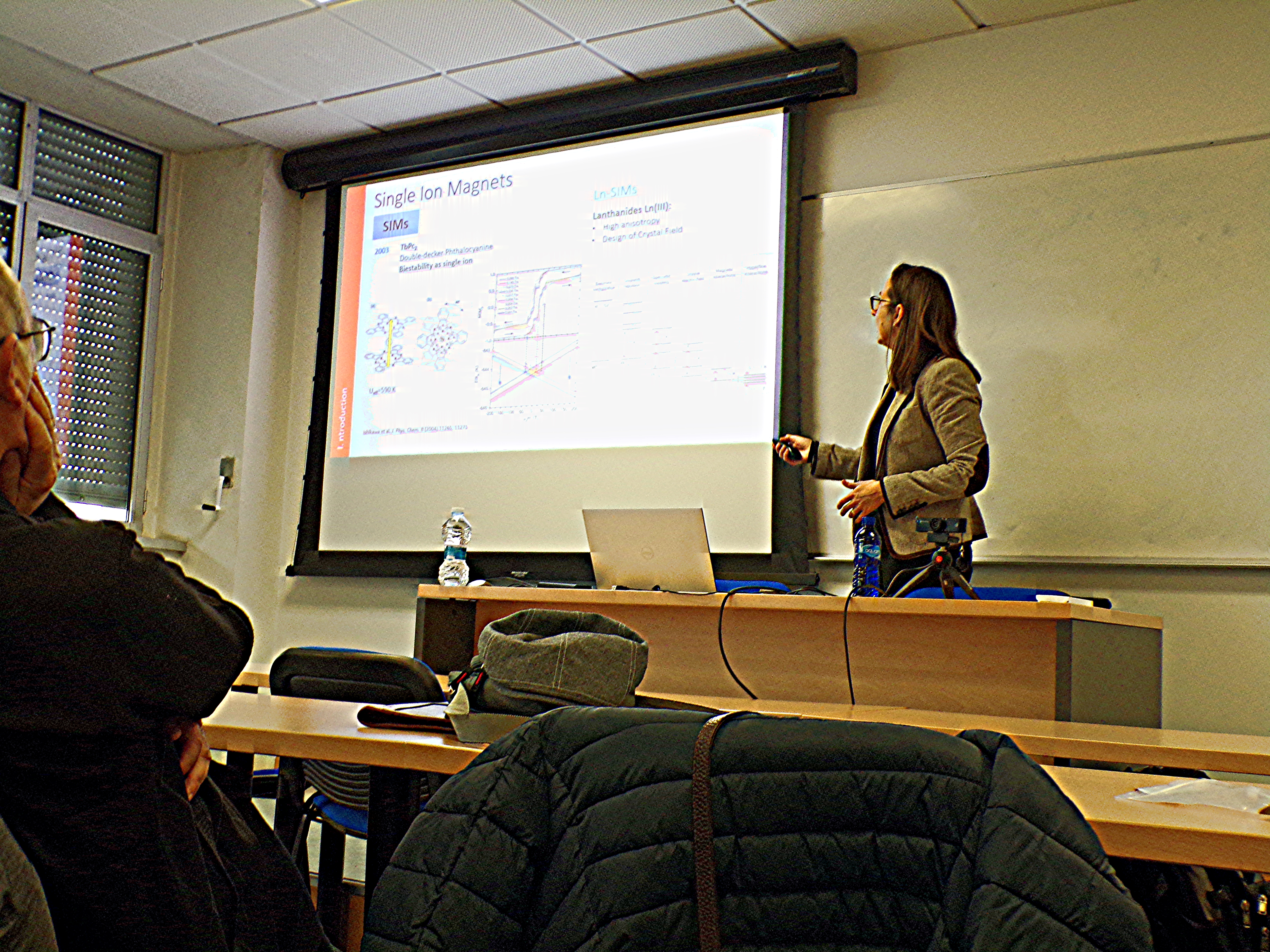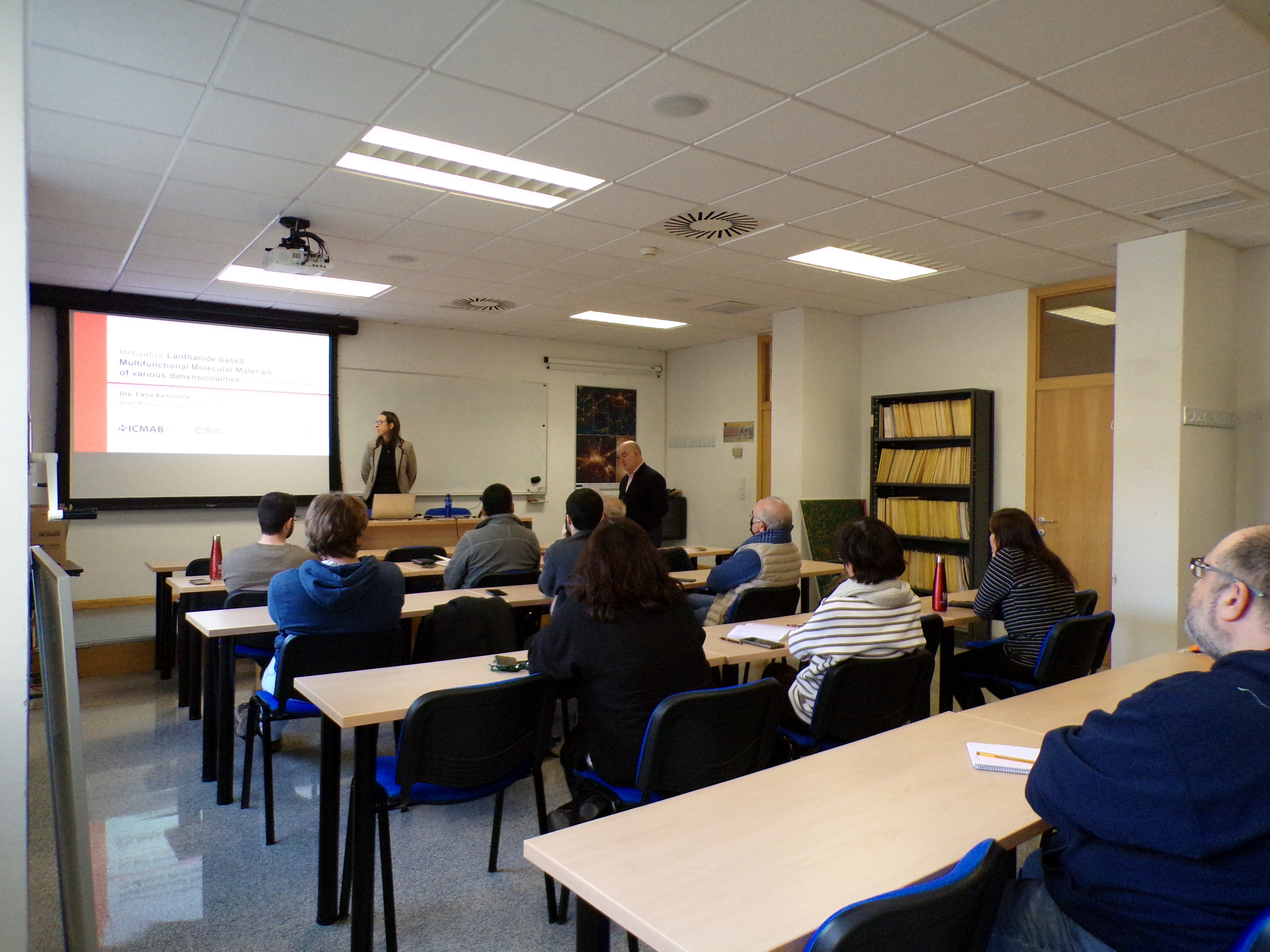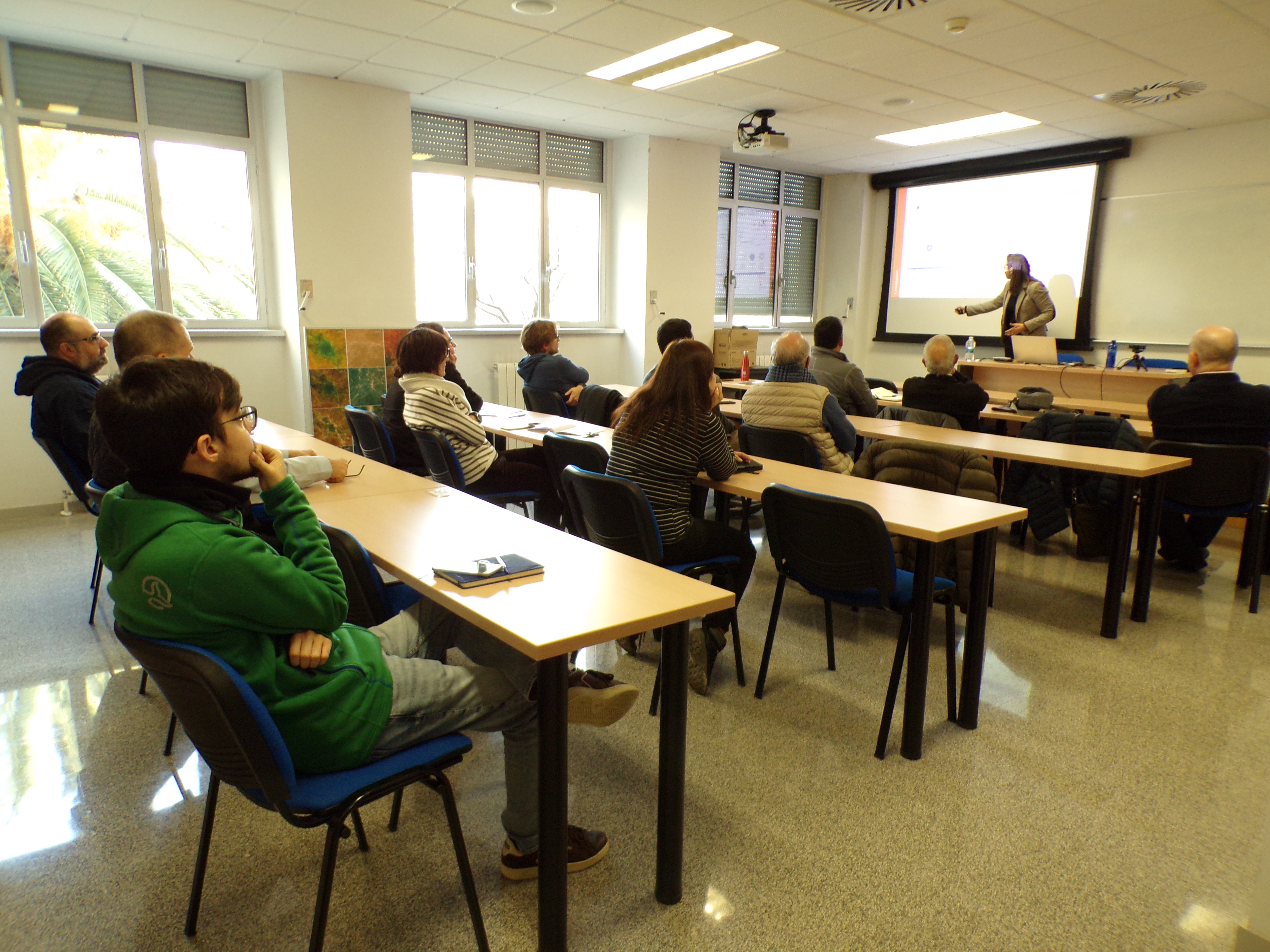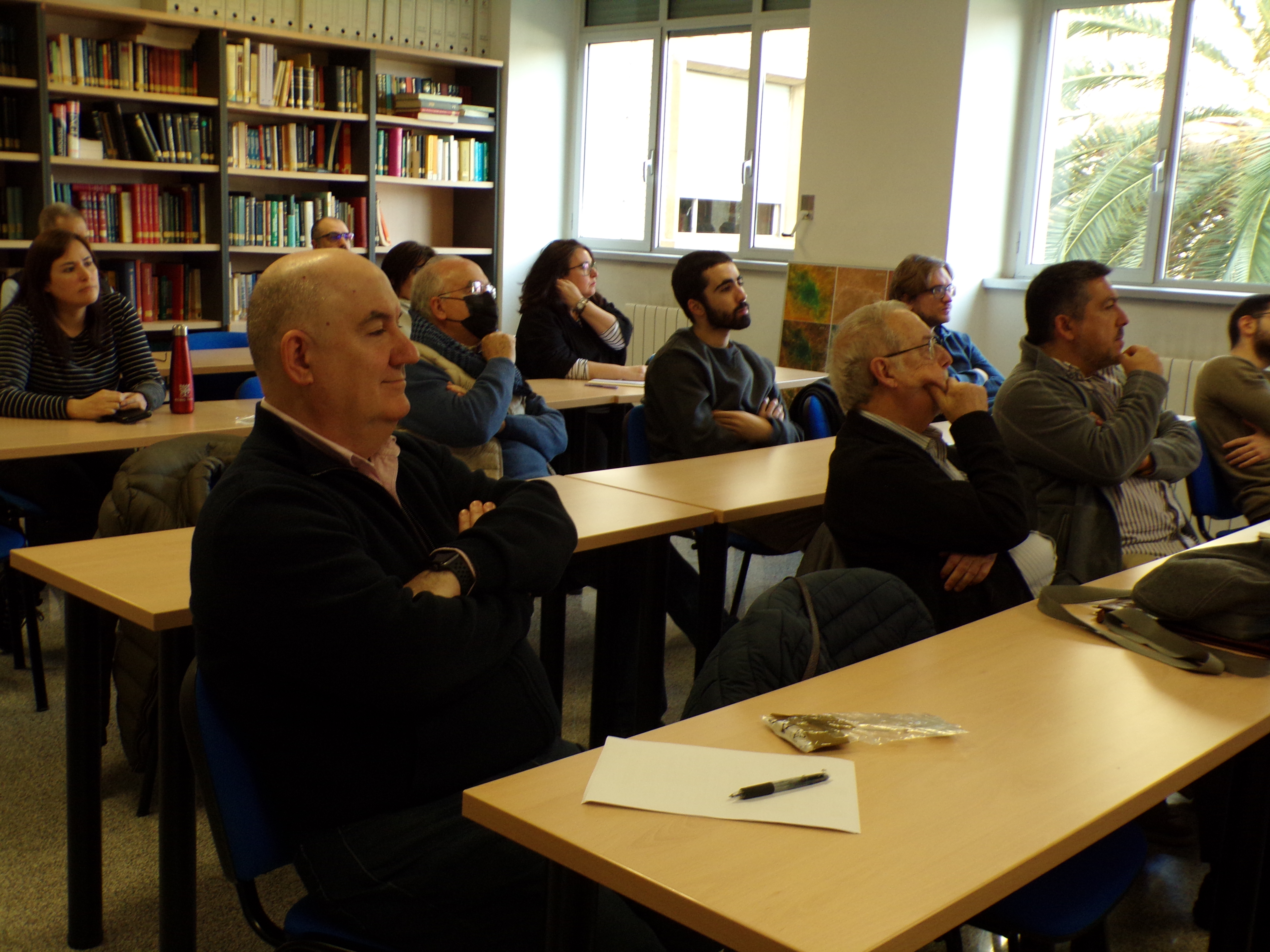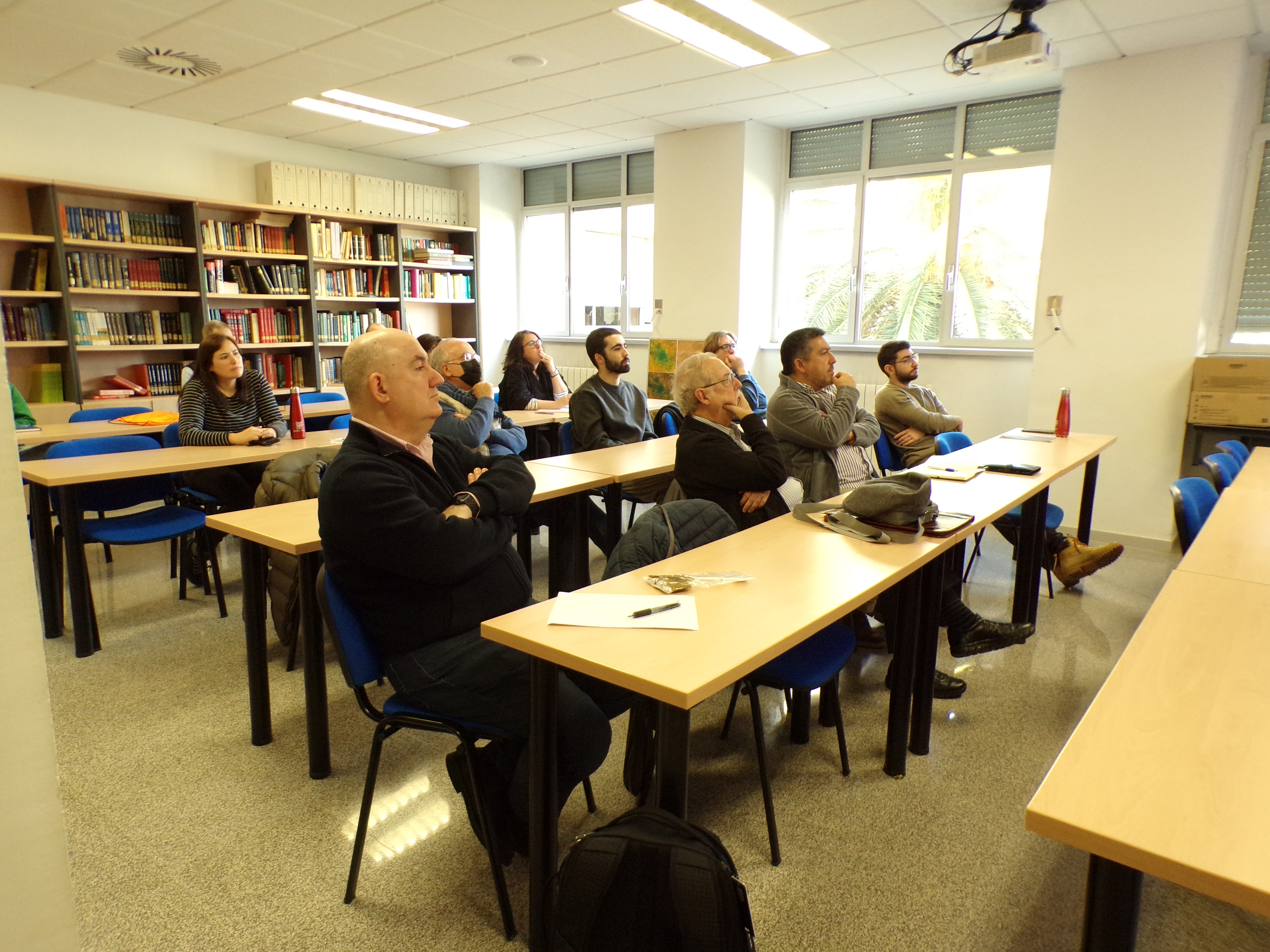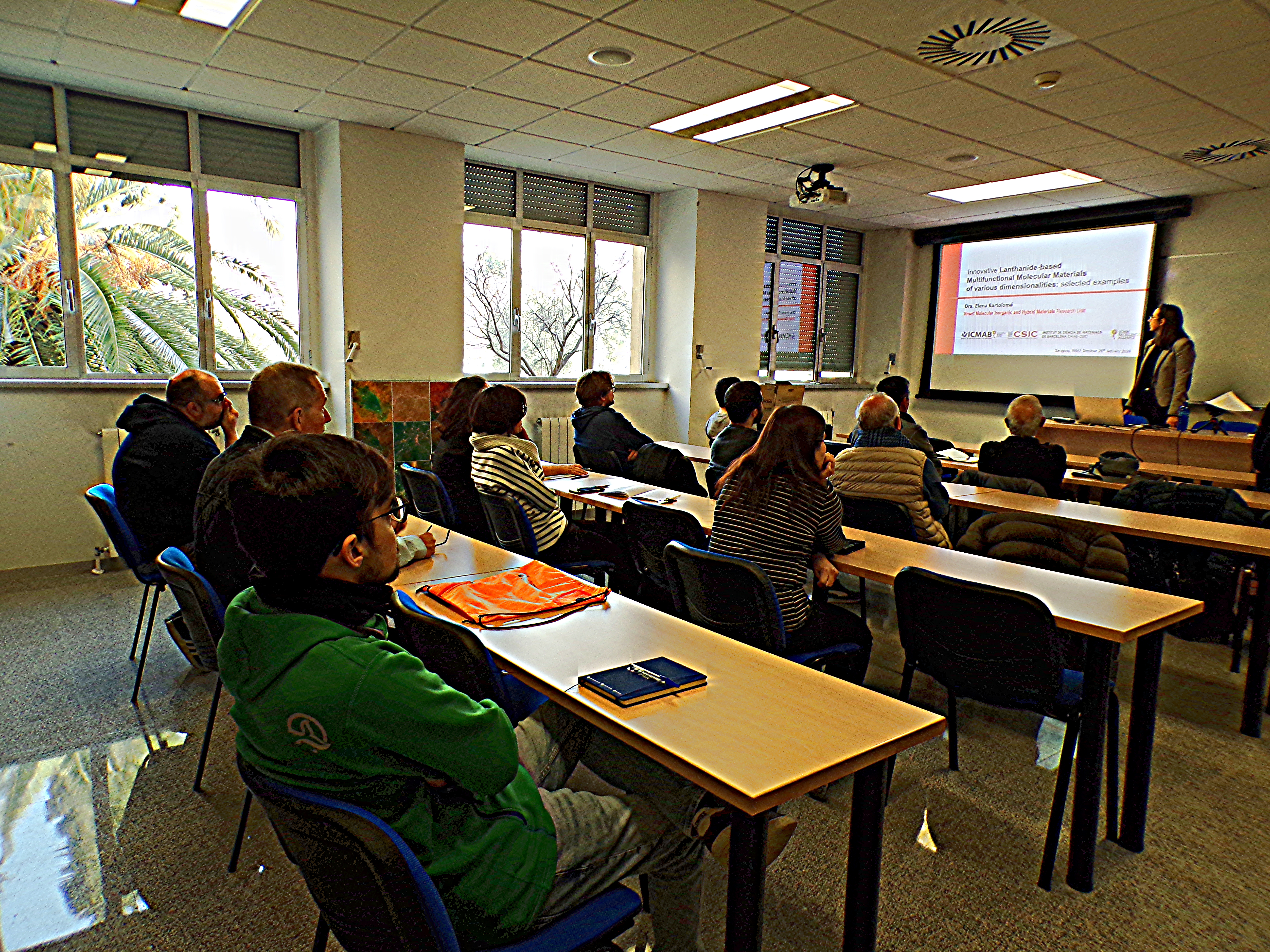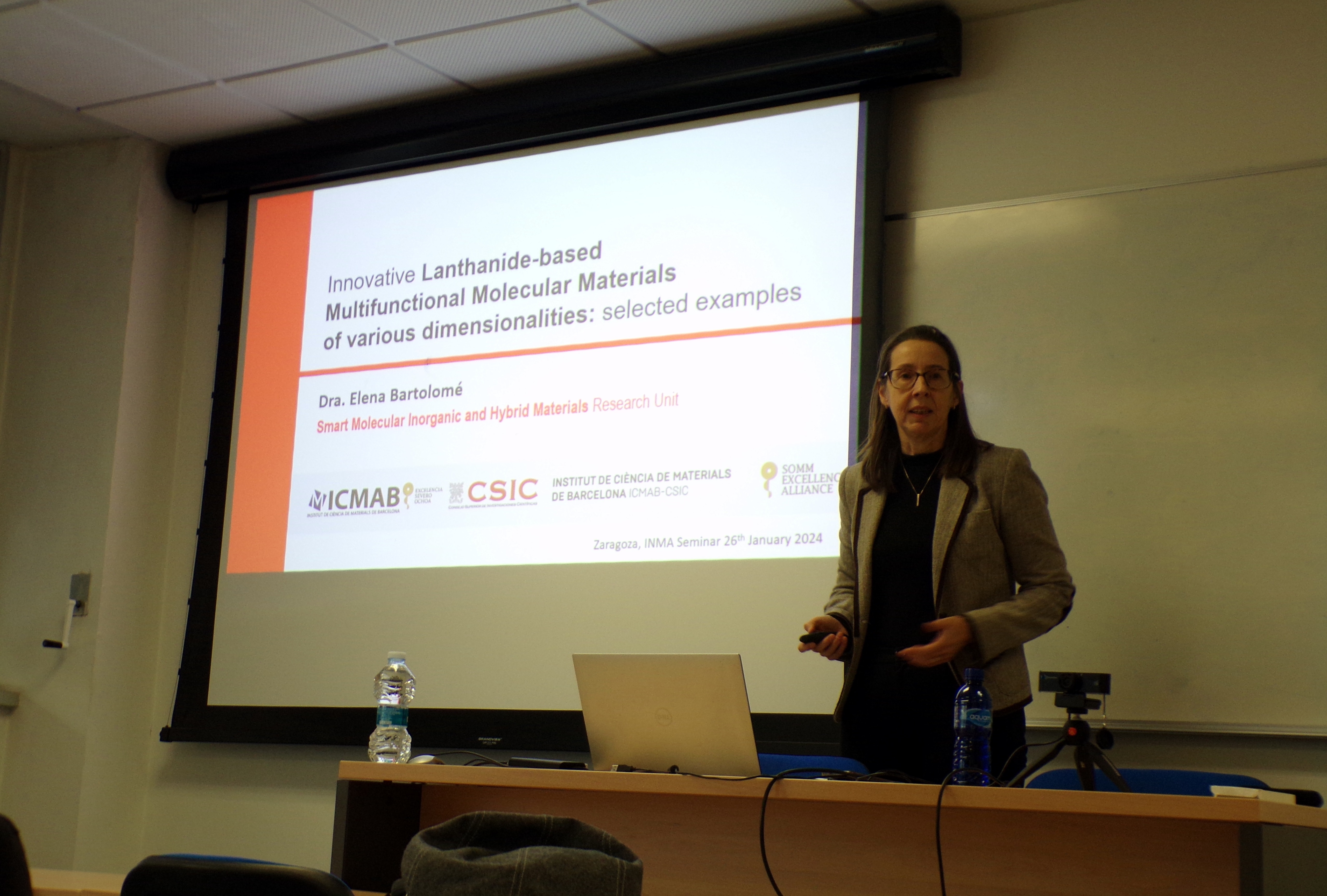
Innovative Lanthanide-based Multifunctional Molecular Materials of various dimensionalities: selected examples
Dr Elena Bartolome Porcal, Institut de Ciència de Materials de Barcelona (ICMAB), CSIC, gave a lecture on “Innovative Lanthanide-based Multifunctional Molecular Materials of various dimensionalities: selected examples”. She was invited by the Institute of Nanoscience and Materials of Aragon to share her knowledge and investigations about this topic through this seminar in Zaragoza, where she began her career. She graduated with a degree in Physics Sciences from the University of Zaragoza.
The seminar was followed by a round of group discussion, where lines of investigation were settled among the scientific comunity who attended the event.
Please find below a brief presentation of the lecture:
” Over the past three decades, significant strides have been made in the chemical design and understanding of Single Molecule Magnets (SMMs), stemming from the groundbreaking discoveries of magnetic hysteresis and quantum tunneling in Mn12. The subsequent identification of magnetic bistability in the TbPc2 molecule spurred intensive research into lanthanide-based Single-Ion Magnets (SIMs). Today, these SIMs boast energy barriers for spin reversal reaching up to 2000 K, with operational temperatures of 80 K above the boiling point of liquid nitrogen, thus paving the way for the practical use of molecular magnets in various technologies.
Furthermore, substantial progress has been achieved in the preparation of multifunctional lanthanide-based metal-organic compounds spanning different dimensionalities, including 0D SIMs, 1D polymeric nanomagnets, 2D magnetic materials, and 3D metal-organic frameworks (MOFs). These compounds hold unique optical, electronics and magnetic properties, arising from 4f electrons, which can be used in numerous applications, such as luminescence, anticounterfeiting, thermometry, magnetic refrigeration, information storage and processing. The molecular chemistry strategy approach offers a flexible solution, enabling the production of reproducible nanomagnetic systems at the forefront of miniaturization, organized onto surfaces, and facilitating the creation of multifunctional materials with diverse properties.
In this seminar, I will showcase the remarkable potential of multifunctional lanthanide-based materials across different dimensionalities, offering selected examples from our recent research.
Our journey will begin with 0D luminescent Ln-SIMs, where I will present our magneto-optical studies on coumarin-based compounds, featuring high bifunctional performance and reversible optical-driven magnetic switching. The exploration continues with furoate-based 1D Ln-polymeric chains, which serve as ideal models for investigating magnetic relaxation as a function of the type of ion, anisotropy, and the relative strength of intra-chain and inter-chain interactions. These chains further provide a platform for low-dimensional, multifunctional magnetic systems. The journey will progress by reviewing our results on homonuclear and mixed Ln-2D MOFs based on carboxylate ligands, enabling exfoliation, deposition of nanosheets, and grafting onto technical surfaces. Our exploration will conclude with multi-lanthanide 3D MOFs. Recently, we were able to synthesize unprecedented carborane-based MOFs incorporating tailored combinations of up to eight different Ln ions, opening a flexible playground for the investigation of “compositionally complex magnetic materials” and the development of multi-functional MOFs with tailored properties “à la carte”.”

